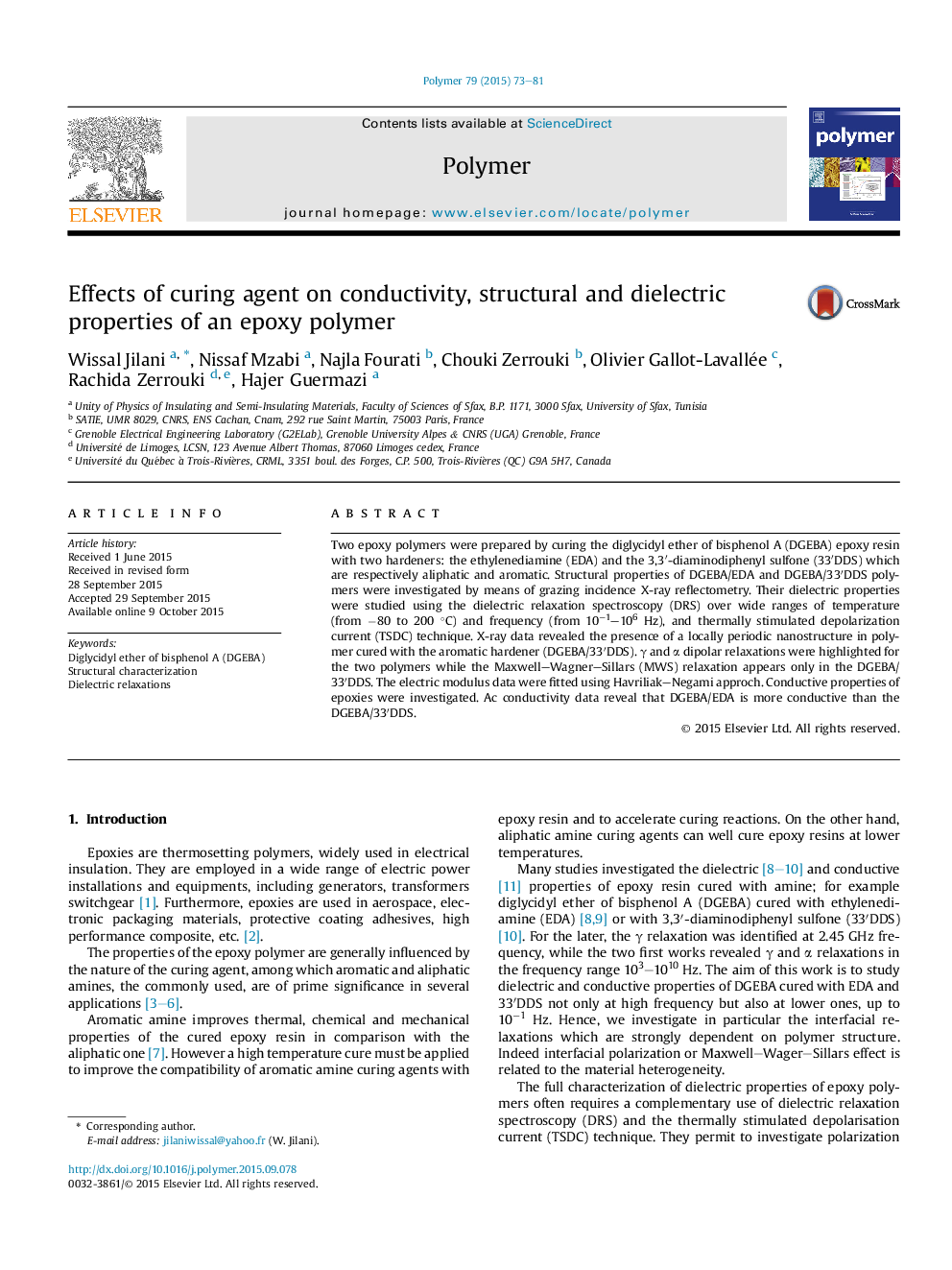| Article ID | Journal | Published Year | Pages | File Type |
|---|---|---|---|---|
| 5179840 | Polymer | 2015 | 9 Pages |
â¢Two epoxy polymers were prepared by curing (DGEBA) with (EDA) and the (33â²DDS).â¢X-ray data reveal the presence of a locally periodic nanostructure in DGEBA/33â²DDS.â¢Î³ and α dipolar relaxations were highlighted for the two polymers.â¢Maxwell Wagner Sillars (MWS) relaxation appears only in the DGEBA/33â²DDS.â¢DGEBA/EDA is more conductive than the DGEBA/33â²DDS.
Two epoxy polymers were prepared by curing the diglycidyl ether of bisphenol A (DGEBA) epoxy resin with two hardeners: the ethylenediamine (EDA) and the 3,3â²-diaminodiphenyl sulfone (33â²DDS) which are respectively aliphatic and aromatic. Structural properties of DGEBA/EDA and DGEBA/33â²DDS polymers were investigated by means of grazing incidence X-ray reflectometry. Their dielectric properties were studied using the dielectric relaxation spectroscopy (DRS) over wide ranges of temperature (from â80 to 200 °C) and frequency (from 10â1-106 Hz), and thermally stimulated depolarization current (TSDC) technique. X-ray data revealed the presence of a locally periodic nanostructure in polymer cured with the aromatic hardener (DGEBA/33â²DDS). γ and α dipolar relaxations were highlighted for the two polymers while the Maxwell-Wagner-Sillars (MWS) relaxation appears only in the DGEBA/33â²DDS. The electric modulus data were fitted using Havriliak-Negami approch. Conductive properties of epoxies were investigated. Ac conductivity data reveal that DGEBA/EDA is more conductive than the DGEBA/33â²DDS.
Graphical abstractDownload high-res image (128KB)Download full-size image
